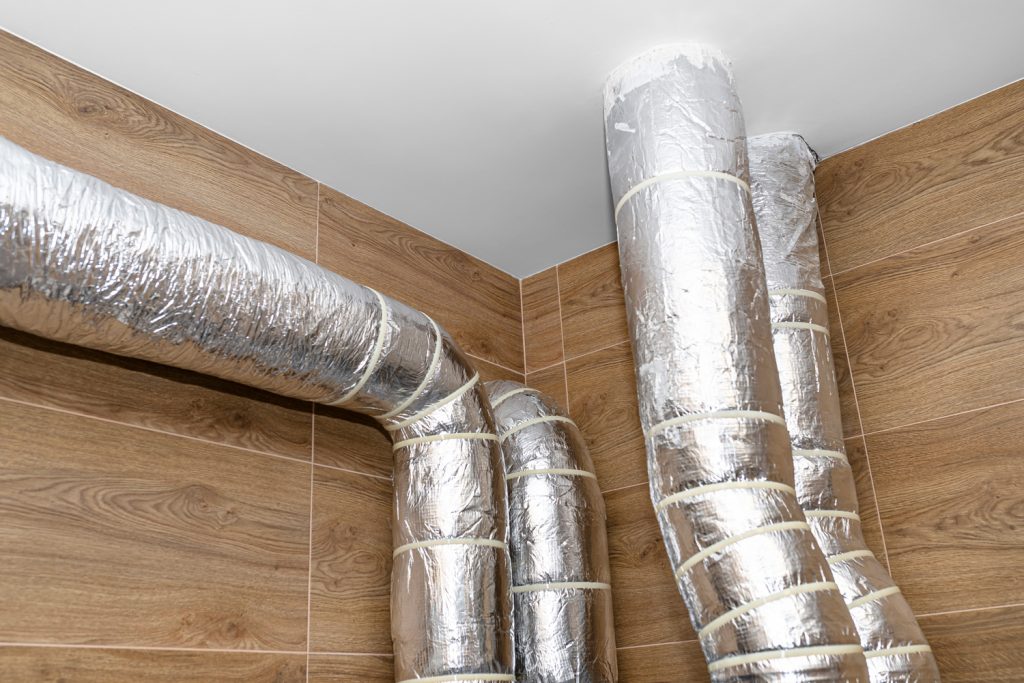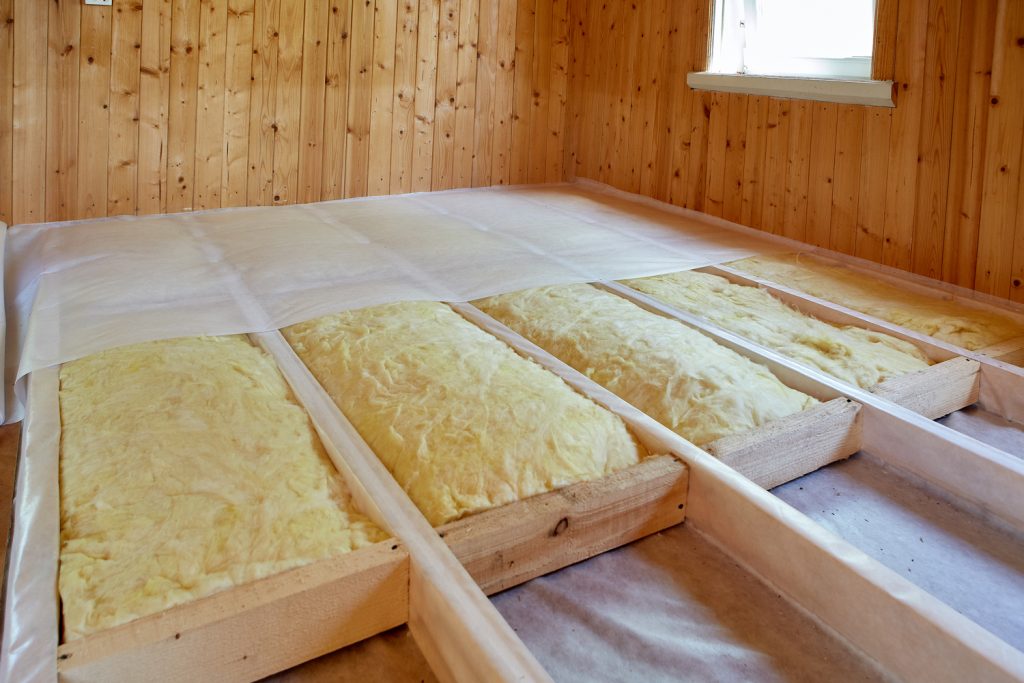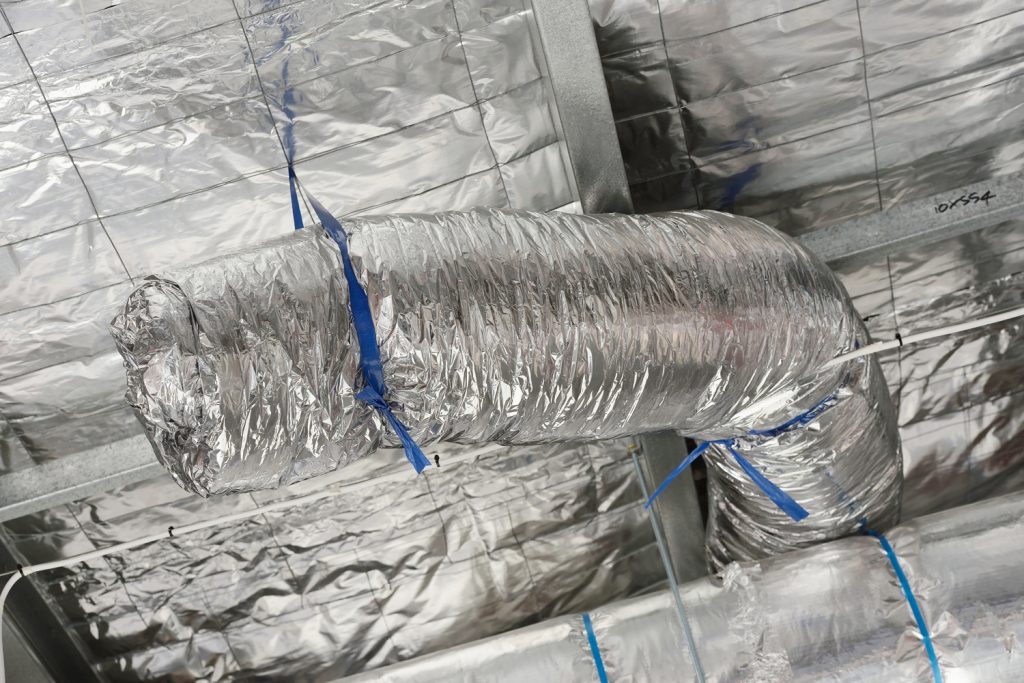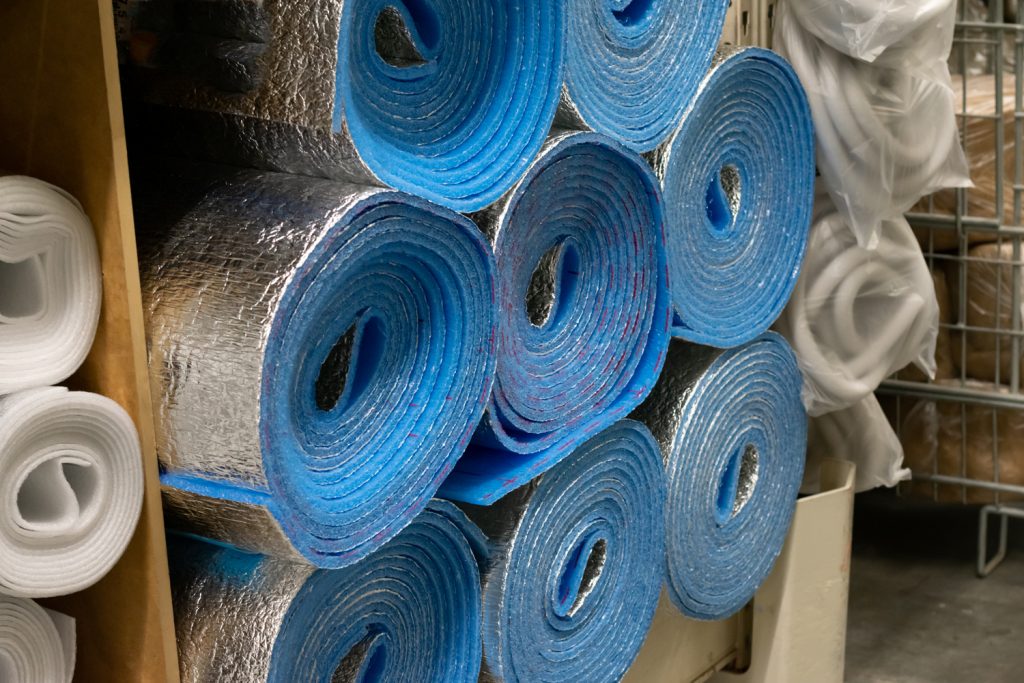As you shop around for insulation, you probably notice that some insulation is sold as foil faced. Noticing this, you might be wondering where, when, and how to use foil-faced insulation. In this post, we combine industry professional knowledge and up-to-date research to answer your question.
Foil facing makes insulation into an air, vapor, and radiant barrier. So generally, use foil-faced insulation in applications where these features will help satisfy building codes or will improve your home's weatherization and air sealing. That being said, foil-faced insulation is most commonly used as a radiant barrier.
Keep reading the rest of this post for details on the above response. We'll delve much deeper into the specific applications of foil-faced insulation as well as when this product is unnecessary. In addition, we'll answer several questions related to the topic of this post.

When To Use Foil-Faced Insulation
As mentioned above, foil-faced insulation works very well as an air, vapor, and radiant barrier. In the following subsections, we'll cover when these elements help in home construction.
Importantly, there are local building codes that dictate the specific requirements for different locations, applications, and building types. When deciding whether to use foil-faced insulation, be sure to first check local regulations.
Air Barrier
An air barrier is designed to stop the movement of air from one side of a building assembly to the other. Other common features that function as air barriers include plywood, and, to a certain extent, drywall.

In a lot of home construction, the air barrier is added to the outside sheathing in the form of Tyvek home wrap.
For foil-faced insulation, the air barrier is naturally aligned perfectly with the insulation. This means that, if the insulation is installed correctly, no air can get from the other side of the foil into the insulation or vice versa.
Thus, you can use foil-faced insulation as an air barrier when you do not want air entering into the insulation from a certain side.
Vapor Barrier
The term vapor barrier means that no vaporized water can pass from one side of a material to the other. This is important when you do not want moisture to enter a wall or space. The moisture often can lead to mold and rot. In turn, these can lead to reduced home value or structural failure.

Critically, foil-faced insulation will not let moisture go in either direction. This is a good thing for keeping moisture out but a problem when it comes to holding moisture in. Thus, the foil facing can actually hold small amounts of water in a space and create mold and rot issues.
According to the US Department of Energy, your home moisture control plan is very important, and mistakes can lead to serious and costly issues down the line. Therefore, only use foil-faced insulation if you have a complete moisture control plan.
Often, this means using foil-faced insulation that no moisture can enter the space where the backside of the insulation is. Other times, this means creating an easy way for any moisture to escape.
Radiant Barrier
Insulation in general is good at stopping convective and conductive heat transfer. However, there is a third type of heat transfer known as radiant heat transfer. Foil facing acts as a radiant barrier.
Essentially, the foil will reflect the heat back in the direction that the heat has come from. For instance, it is common to install radiant barriers in attics to reflect the hot summer heat.
Click here for a radiant barrier from Amazon.
Unlike air and vapor barriers, radiant barriers only work if there is empty air space between the source of heat and the radiant barrier. Thus, if the foil facing is pressed tightly up to other building material such as drywall, it will conduct heat just like any other material.
On the other hand, if the foil facing is pointing up in an attic, the heat that radiates down off the roof in the summer will be partially radiated back up towards the roof.
Where to Use Foil-Faced Insulation
In this section, we'll cover the most common applications where builders use foil-faced insulation. Since there is a wide range of materials that act as vapor and air barriers, foil-faced insulation is typically used as a radiant barrier. However, foil-faced insulation is also used to wrap ducts and pipes.
Radiant Barrier
As a radiant barrier, foil-faced insulation is most commonly installed in the walls and ceilings of hot and sunny climates. This use helps reflect the hot outdoor heat back to the outdoors. This decreases air conditioning costs which thus increases home comfort.
In a similar sense, sometimes the foil facing is turned towards the inside of homes in very cold climates. In this case, the facing will reflect the warmth provided by the internal heat back into the home.
Take note that this type of foil-faced insulation is generally a specialty product and is most easily purchased from big insulation suppliers and other home building wholesalers.
Ducts and Pipes
In addition, foil-faced insulation is used to wrap ductwork. In this case, the vapor and air barrier nature of the insulation is being taken advantage of. These two features help keep moisture and outside air off your ducts. This helps bring that conditioned air to all parts of your home.
Click here for foil-faced duct insulation from Amazon.
Further, foil-faced insulation is used to wrap pipes. The same features are being used for this application as for ducts.
Click here for pipe wrap foil-faced insulation from Amazon.
How to Use Foil-Faced Insulation
Altogether, you want to consider the issues discussed above when deciding how to use foil-faced insulation. That being said, the insulation can be installed the same as any other insulation of that particular type.
As mentioned, the most important factor is that for the radiant barrier nature of the foil facing to work, there needs to be an adjacent air gap. A rule of thumb is that there needs to be at least 1 inch of space between the foil facing and the nearest other building elements.

Also, the radiant barrier's effectiveness will be seriously decreased if dust and dirt are allowed to collect on the foil facing. Therefore, be sure to take precautions to keep the foil facing dust free. This is not a concern in sealed walls but may be a big issue on attic floors.
Further, foil facing is relatively flammable. Therefore, special consideration needs to be taken to ensure that the material is installed in a way that follows the local fire code.
Finally, if you are wrapping ducts or pipes in foil-faced insulation, be sure that the facing is on the side of the insulation that is away from the duct itself.
What Kinds of Insulation Has Foil Facing?
Generally, only fiberglass batts and rigid foam board insulation are sold with foil facing. However, you can get the foil facing alone without the insulation. This material is generally sold and marketed as a radiant barrier.
How Does Foil-Faced Insulation Differ From Paper-Faced Insulation?
Foil-faced insulation and paper-faced insulation are different not only in the material that is used to cover the insulation but also in their application.
Specifically, foil-faced insulation is an air vapor and radiant barrier. Paper insulation, on the other hand, only acts as an air barrier. In most applications, paper facing alone is both sufficient and preferred.
Can you put faced insulation in an attic?
Yes, faced insulation is very commonly used in an attic. If you are using paper-faced insulation, you always want the facing towards the conditioned part of the home in order to align the temperature and pressure boundaries.
On the other hand, if you are using foil-faced insulation, the most important consideration is that the insulation has an air gap between it and the source of heat that you are trying to reflect.
Can you lay insulation across rafters?
Yes, you can. However, it is generally considered better practice to stick the insulation between the rafters. This will provide a much more continuous and effective layer of insulation.
When laid across rafters, the edges where the insulation butt together are going to pull apart and sit without perfect alignment. These gaps are prime opportunities for air leakage. This leakage decreases the effectiveness of the insulation, which increases your utility bills.
Do I need a vapor barrier if I use faced insulation?
The answer to this question depends on the local building codes and the entire wall assembly. However, if you are using foil-faced insulation, that part of the wall already has a vapor barrier. On the other hand, if you are using paper-faced insulation, you may want to add a vapor barrier.
Take note that, in many situations, a vapor barrier will serve to trap water vapor in a building element leading to mold and rot issues. Therefore, when deciding on how and when to add a vapor barrier, talk with local builders and inspectors who are familiar with your local climate and laws.
In Closing

In this post, we covered when, where, and how to use foil-faced insulation. Here, we covered the general uses and special applications for this insulation type. To conclude, we answered several questions related to this topic. Good luck!
To learn more about different insulation types, take a look at these other articles:
How Long Does Cellulose Insulation Last?



